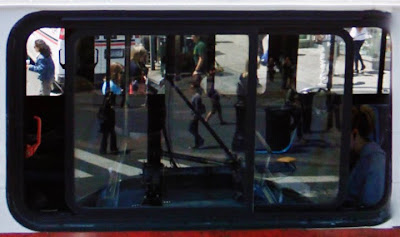What is December 31 without a top ten list?
It’s been an odd year. A recovery year where it seemed like there were fewer highs and lows as everyone hunkered down with fingers crossed. Photographers being the creative people they are, however, signs of life could not be kept down and so in no particular order here are my top ten visual pleasures of 2010.
1. Richard Learoyd.
Working with a self-made camera that creates highly detailed near life-size images by projecting an image directly onto photographic paper without any interposing negative – Learoyd has invigorated at least three genres at once – cameraless (or more accurately film-less) photography, portraiture, and still life.
2. Auctions.
Continuing to make inroads into what was traditionally gallery territory, the auction houses (particularly Christies and Phillips) are putting on more interesting, original, and varied sales. And for the astute collector there are always bargains. This Irving Penn self-portrait from 1948 went for what I’m sure will be seen as a buy at $45,000 at Christies in London this past spring. I'd say it's worth at least double.

3. Mickalene Thomas.
The connections between contemporary art and traditional photography continue to intertwine as seen here in Mickalene Thomas’ bad-ass tribute to Seydou Keita. Jumping between painting, appliqué, and photography, Mickalene Thomas is just one of the new breed of hyphenates making waves as the art and photography world continue to grow closer together.

4. Susan Derges.
After a relatively quiet period, Susan Derges – one of the fab four of British camera-less photography – has re-emerged with a series of new photograms based around the idea of rock pools. In this image, Jackson Pollock meets Turner as light, color, and line intersect in a glorious mixture of fresh photographic ideas.
5. Tokyo Photo.
Gaining strength and energy – Tokyo Photo is fast emerging as the go-to fair of the east. Founder Tomo Harada, pictured above, has made it his mission to make the event a must see and entering year three the mix of American and Japanese dealers is creating an ever more exciting cultural exchange.

6. Patrick Smith.
Top of the list of new(ish) names that have emerged in photography this year is French photographer Patrick Smith. While clearly working in the tradition of Vitali and Niedermayr, Smith’s pictorial eye and immaculate exposures have a purity all their own.

7. Surprises.
No matter how much you think you know about photography, there are always surprises. Going through Art Miami I came across a group of pictures of Elizabeth Taylor by Frank Worth. I don’t know how I had never seen or heard of these images before but that is what makes life so interesting. (And boy, was she a beauty!)

8. Bruce Weber.
One of the best museum shows around (and up through February 13), Bruce Weber’s photographs of the residents of Miami’s “Little Haiti” neighborhood at The Museum of Contemporary Art in Miami are a reflection of Weber’s outstanding skill and diversity. To those who only think of Weber as a fashion photographer, the work may be a surprise, but to any one who has followed his career closely, the humanism and warmth of the work should come only as a welcome treat.

9. Jim Krantz.
One of the few disappointments of this gallery year for me was putting off a show of Jim Krantz’s work when we couldn’t get the releases we needed. Krantz is probably the most distinguished of the Marlboro photographers whose work was appropriated by Richard Prince for his “Cowboys” series. But Krantz is back in the saddle making new images strictly for himself of which the above image shot in 2010 is just the beginning. Stay tuned.

10. Teresa Vlckova
Noted as one of the highlights of Aperture’s latest round-up of new talent - reGeneration 2 – Teresa Vlckova creates pictures that pull us into her otherworldly universe of flying girls and Brothers Grimm-like twins. Born in 1983 in Vsetín, Czech Republic, Vlčková’s work will be seen in the U.S. for the first time in January when Aperture exhibits a selection of work of the 80 photographers featured in the book "reGeneration 2". If Vlckova lives up to her early promise, she will clearly be a name to be reckoned with.













































